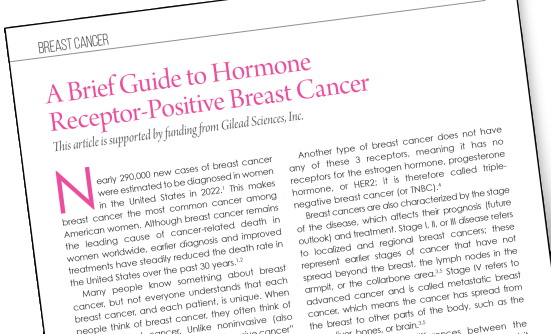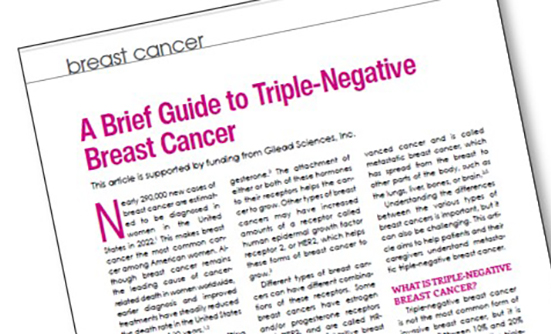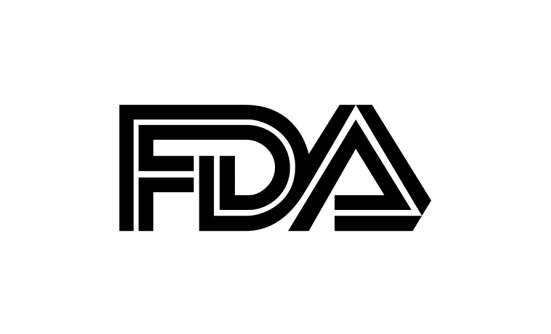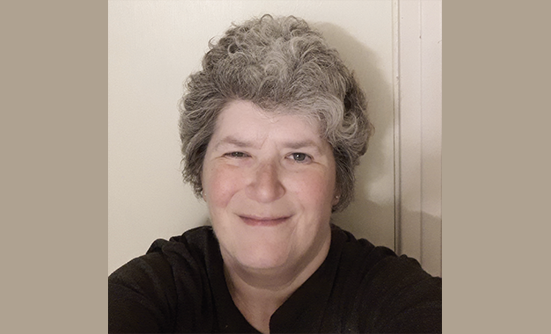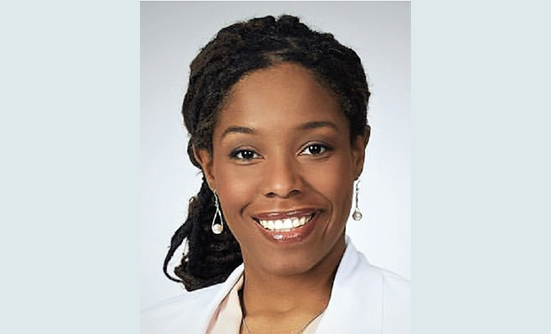
Your oncologist has recommended surgery as part of your treatment plan for breast cancer. But it’s not that simple: there are decisions to make about the type of surgery for your treatment plan and then more decisions to make about surgery for your cosmetic plan. Surgical options regarding your treatment plan may include lumpectomy (also known as a partial mastectomy), unilateral mastectomy (removal of one breast), or bilateral mastectomy (removal of both breasts). After making that decision, you are asked to make more decisions about cosmetics—specifically, whether you’d like to have reconstructive surgery, or not.
That’s a lot of decision-making for someone who is still grappling with the news of a cancer diagnosis. Speaking from experience, the amount of information and required decision-making can feel overwhelming. Cancer treatment decisions are about protecting your life and your future; but especially with surgeries that change our appearance, they can also be about protecting our sense of self along the way.
Surgical decision-making can be made easier by seeing examples of women who have gone through this and remain beautiful and strong. Many of us felt this was so important that we worked together to find a more reassuring way to share surgical information and recovery tips. This article shares some of our surgical decisions and photos, taken from the book Beauty After Breast Cancer. Shared with the participants’ permission, these partial excerpts from the book will hopefully serve the purpose we intended: guiding and providing hope (and the knowledge that you’re not alone) as you navigate this breast cancer space.
Insurance Coverage
The Federal Women’s Health and Cancer Rights Act1 ensures that insurance companies help cover the following costs:
- Reconstruction of the breast that was removed by mastectomy
- Surgery and reconstruction of the other breast to make the breasts look symmetrical or balanced after mastectomy
- Any external breast prostheses (breast forms that fit into your bra) that are needed before, during, or in place of reconstruction
- Any physical complications at all stages of mastectomy, including lymphedema (fluid buildup in the arm and chest on the side of the surgery)
Unfortunately, there are a few exceptions to this act, such as varying state laws and certain types of insurance that do not cover mastectomies, and therefore are not required to cover any associated expenses. If your insurance pays for the surgery, then they should also cover reconstruction or prostheses. Insurance issues can be challenging; my advice is to talk to your medical team, especially your oncology patient navigator, if you need help.
Personal Preferences
The recommendations of your treatment team in combination with insurance considerations set the framework for your surgical decisions. But then, it gets personal. Really personal. There are many factors that can impact how you feel and ultimately help you determine what you want. There are critical questions that many women, including myself, have found helpful when it comes to making surgical choices:
- How big a role do my breasts play in my overall identity?
- Do I have other risk factors that might guide me to a more radical surgery choice?
- How willing am I to have additional surgeries in the future?
- How does having or not having breasts potentially affect intimacy for me?
- How cautious do I want to be regarding potential risks and side effects?
- Are there personal or treatment-related reasons to select a certain surgery or certain timeline?
First Things First
Your decision about surgery should be based on your treatment needs. Your medical team will make a recommendation based on your individual situation—including the type of cancer, the stage, how aggressive the cancer is, and how likely it is to return. Many times, your treatment team will recommend initial reconstruction steps to be completed during the first surgery; but keep in mind, if you are on the fence about reconstruction, these steps do not have to occur simultaneously.
This is worth repeating: you do not need to make an immediate decision regarding reconstruction. You may need to make a quick decision about the type of initial surgery, but you do not necessarily need to rush into a decision about reconstruction. In most cases, reconstruction can be addressed at a later time. My advice? If you need more time, take it. And, as in the case of Amy, it’s okay if you change your mind down the road.
Amy

Amy chose a skin-sparing mastectomy with the intention of having reconstruction surgery later. She ultimately decided against reconstruction or even a surgery to have the extra skin removed and tucked flat—she just didn’t care enough to go through another surgery.
When she wants her profile to appear symmetrical under clothes, she can use a prosthesis in her bra. A custom prosthetic would work particularly well for Amy because it would be designed to her exact shape.
Reconstruction Options
Surgical reconstruction involves using either your own body (muscle flaps and fat), implants, or a combination of the two to build up a new breast shape. There are multiple reasons why your surgeon might recommend one versus the other. Surgeries that take muscle from other areas may involve longer recovery times; surgeries that involve implants may require additional surgeries at a later date to replace the implants.
In Photo Album 1, you will see results of reconstructive surgery from four women who underwent different types of surgeries.
Photo Album 1: Reconstructive Surgery Results
Nicole
Lat flap surgery with implants



Allyson
Silicone implant reconstruction with adipose (fatty tissue) used to round shape
Roberta
DIEP trans flap reconstruction was selected to bring extra skin to the area because the existing skin had limited elasticity due to radiation. Surgery was recently completed so scars are still not fully healed in this image.
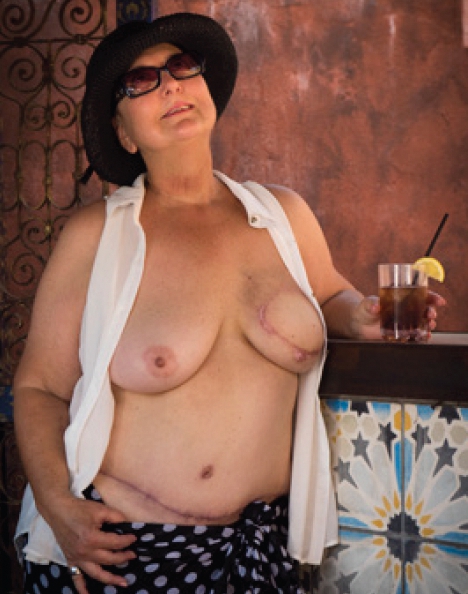

Ashley
Silicone implant reconstruction with partial nipple-sparing surgery
Why Some Women Choose Not to Reconstruct
There are potential side effects or complications with any type of reconstruction. If minimizing the number of possible complications is a high priority for you, starting off without a reconstruction might be your best option. If maintaining your presurgical look is a higher priority, that would steer you towards reconstruction. Either way, it is important to know that your body will not look or feel the same after surgery. Numb areas are a common result of surgery, and your physical appearance will not exactly match the version of you that you’re used to seeing. That can be hard. It’s also important to recognize that the way your body looks immediately postsurgery will be different (and sometimes more alarming) than what you see after a few months of healing.
One of the best ways to explore nonsurgical options is to find a mastectomy apparel shop in your area. These shops are staffed with professionals who are specially trained to fit you for different clothing and breast prostheses that will give you a more typical silhouette after surgery. Often, they can also suggest other products that help you look and feel more like yourself during treatment too—everything from wigs, to eyebrows, to compression garments, to prosthetics. With all the prosthetic breast options available, I find that I’m almost always able to be comfortable in my clothes and my body using one of those choices. I jokingly say that every morning I pick out my outfit, my jewelry, and my boobs. Then I’m ready for the day.
In Photo Album 2, you will see results of four women who who opted to forego reconstructive surgery.
Photo Album 2: Mastectomy Without Reconstruction Results
Sokha
Unilateral (one-sided) mastectomy without reconstruction


Linda
Lumpectomy (or partial mastectomy) without reconstruction
Inga
Bilateral mastectomy with tattoo coverage

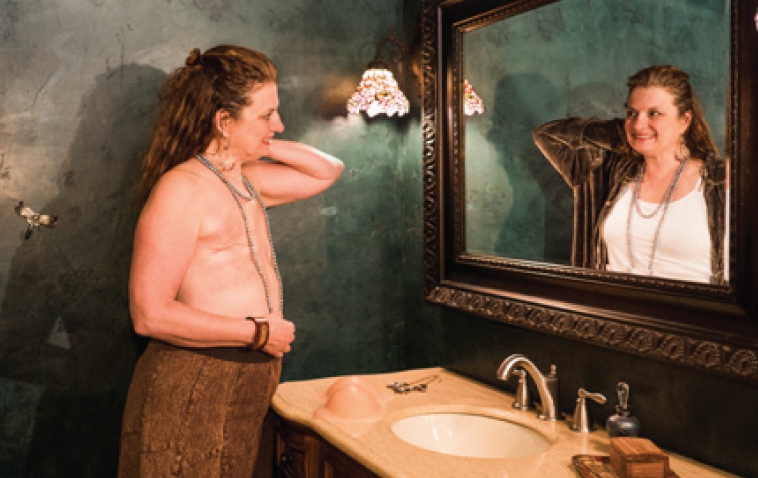
Kathy
Bilateral mastectomy with prosthetic usage

My Decision
I opted to have a bilateral preventive mastectomy at age 29 because every woman in my family along one line, and every woman in the generation before me, had aggressive forms of breast cancer. In talking (and testing) with a genetic counselor, I learned my risk of a breast cancer diagnosis was high. A bilateral mastectomy would reduce my risk from potentially 85% to ~4%.
I had to decide on the type of surgery. Having the mastectomy without reconstruction felt like too much of a culture shock for me. Using muscle flaps from my abdomen might not be the greatest choice when I planned on future pregnancies. I was worried that using flaps from my back might exacerbate preexisting back issues. The possibility of future surgeries was okay with me. Ultimately, I opted for reconstruction with implants and nipple tattoos.
For 12 years I maintained the reconstruction, then I decided to remove the implants. My decision to remove the implants was related to issues I was having with scar tissue. By this time in my life, I felt confident without breasts.
Final Thoughts
Many women, including myself, have changed their minds as time goes on and opted for reconstruction years after a mastectomy, or deconstructed a reconstruction. For now, just know that you have a right to make an educated decision. Make use of as many resources as possible to explore your options and remember that you are allowed to take time if you are not certain about reconstruction. You may not regain your exact body after surgery, but you can still feel confident and beautiful again.
Reference
- Centers for Medicare & Medicaid Services. Women’s Health and Cancer Rights Act (WHCRA). Accessed August 30, 2023. www.cms.gov/CCIIO/Programs-and-Initiatives/Other-Insurance-Protections/whcra_factsheet.

About the Author
Katelyn Carey, RN, is a nurse educator and author who specializes in the science of compassion. Using trauma and cognitive science in combination with 20 years’ experience in ER, hospice, and acute care, Katelyn teaches communication strategies and recovery tools that help patients and caregivers navigate stressful times successfully. She is author of Beauty After Breast Cancer.









